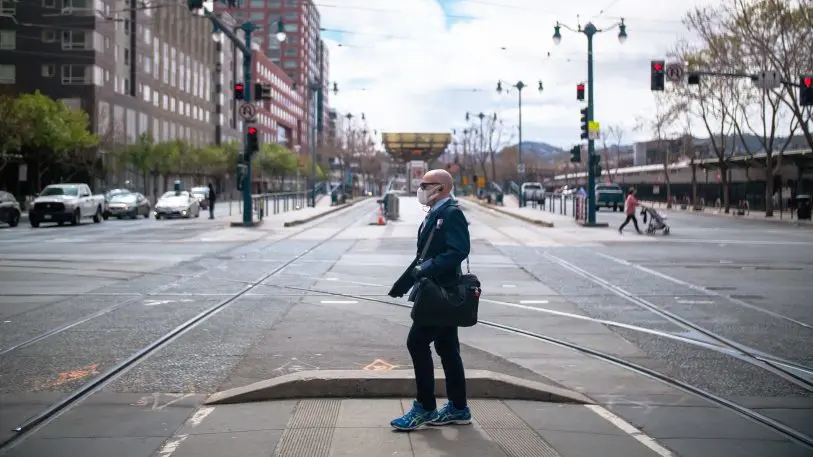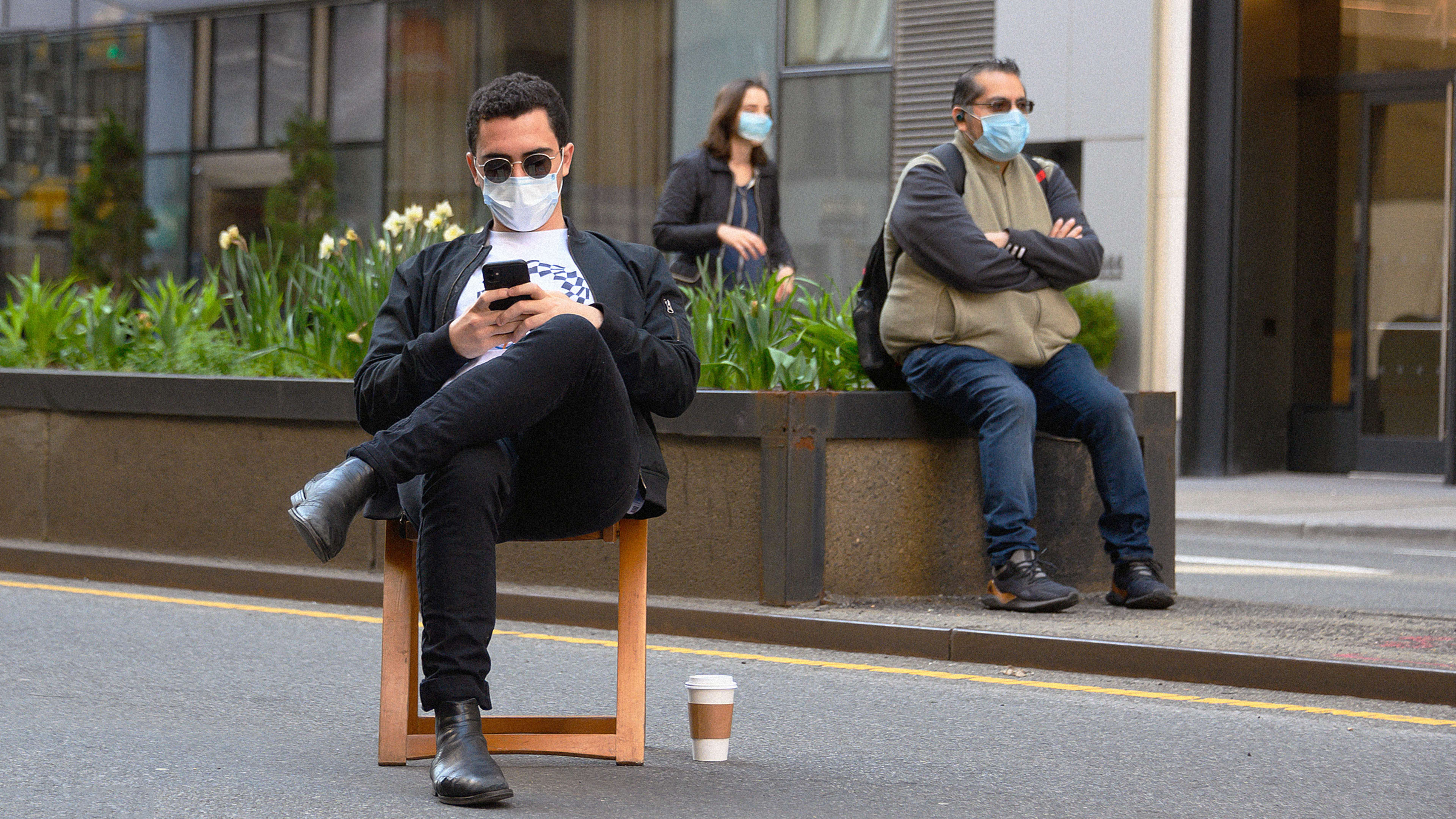A little over a month ago, after the first community-spread cases of COVID-19 were reported near Seattle, U.S. surgeon general Jerome Adams tweeted a message to the American public: “Seriously people- STOP BUYING MASKS! They are NOT effective in preventing general public from catching #Coronavirus, but if healthcare providers can’t get them to care for sick patients, it puts them and our communities at risk!” The standard advice of the WHO and the CDC was the same—people shouldn’t be wearing masks unless they were already infected with the coronavirus or caring for someone with the disease. But now the CDC is expected to change its guidance to say that all people should wear cloth masks in public.
The initial messaging was obviously confusing: If the masks were so key for healthcare worker safety, why wouldn’t they work for the general public? But the public health messaging seems to have been designed to prevent people from hoarding the N95 masks, the masks that can most effectively block the virus. The shortage of N95s is still a serious, deadly problem for healthcare workers. But that doesn’t mean that everyone else shouldn’t be using face coverings of some other kind, such as surgical masks—which are back in supply in China—or even DIY masks.
“This is a respiratory virus, so there’s no doubt, scientifically speaking, that masks help reduce the spread if you also continue to take other appropriate measures,” says Michael Lin, a neurobiology and bioengineering professor at Stanford University who also holds a medical degree. Lin has published a useful guide to the science of COVID-19 and SARS-CoV-2, including recommendations on masks.

In the earliest stage of an epidemic, it’s true that masks are most useful for healthcare workers, not the general public. “That’s simply because healthcare workers see the sick people, whereas the infection rates in the general population early in an epidemic are so low that the regular person buying a mask and wearing it would be wasting the mask,” Lin says. “But as infection rates go up—it’s probably over 1 in 100 or over 1% in New York City right now—it makes sense to reduce the rate of transmission in the population. If you stop transmission in the population, then you wouldn’t have so many people going to hospitals. So at some point, the balance shifts where it’s actually more efficient to stop spread in the population than to allow it to go unchecked.”
Read more: 4 simple masks you can make yourself
Scientists don’t yet understand all of the details of how the coronavirus spreads, but they believe that it’s most likely spread by droplets, little beads of saliva and mucus that surround the virus. When someone with the infection coughs or sneezes (or potentially even when they’re talking or breathing), these droplets can be inhaled by someone else. The droplets quickly fall, which is why we’re keeping a six-foot distance from other people now. But in cases where some contact is unavoidable—such as waiting in line to buy groceries and interacting with a cashier—a mask can help dramatically reduce the chance of breathing droplets in. An N95 mask provides a level of protection that likely isn’t necessary in most ordinary interactions, but a cloth mask can still help.
“I think for the kinds of exposures people are getting in the era of social distancing, a cloth mask would be fine,” Lin says, reiterating that the public has no need for N95 masks. Healthcare workers can see dozens of patients a day, and many of those patients are now sick with COVID-19; they also need to change masks to avoid spreading the virus between patients. In a hospital, some medical procedures make it more likely that the virus becomes “aerosolized,” turning it into tinier particles that require a higher-quality mask for better protection. But it’s not necessary for others who are now sheltering at home.
“Now that we’re doing social distancing, you’re not supposed to be talking at length to strangers, and you’re supposed to be staying six feet away,” Lin says. “Those measures, seeing fewer people and staying far away from them, will already drop your risk for actually inhaling a virus particle substantially. So you don’t need the same amount of protection. But you should put some sort of face covering on when you do expect to encounter people.” If you’re sick and don’t realize it, masks also can prevent you from infecting others. Other countries have moved faster: In Austria, it’s now compulsory to wear a mask while shopping for groceries. The director of the Chinese Center for Disease Control and Prevention said that he thought that not wearing masks was “the big mistake” that the U.S. and European countries are making.
We know masks work very well at preventing you from transmitting viruses via your own droplets. So as we come to learn that the coronavirus can be spread by people who don’t even know they’re infected yet, normalizing the use of masks for everyone could cut down on transmission by making sure everyone is masked up, even if they don’t think they’re sick.
Though studies on how well they prevent the wearer from becoming infected are few and contradictory, there is some evidence: One large study of nurses found that those who wore surgical masks during the flu season were as likely to avoid getting sick as those who wore N95 masks. Both groups were protected around 95% of the time. Other studies suggest that if someone in your household is sick and you wear a mask to take care of them, you’re between 60% and 80% less likely to get sick yourself. Masks need to be used correctly, of course, meaning that they need to fit well and that people shouldn’t touch the front of the mask; if you’re forced to reuse masks because of limited supply, you should wait days between reuse for any possible viruses to die.
“Respiratory viruses and droplets can be blocked to a large extent by breathing through a mask,” Lin says. “The contention of CDC that it’s not effective in preventing you from getting a virus from a sick person is baloney.We know scientifically, and from common sense, that it does help. For them to say that is really dishonest and has caused a large loss of credibility. In an epidemic where the credibility of the public health organization is paramount.”
“This is all about risk,” he says. At current infection rates, “you still only have a one in 100 or one in 1,000 chance that anyone you’re speaking with is carrying the virus. If you’re wearing some kind of face covering and you reduce your risk further by 70%, that would make a huge difference to the spread of the epidemic. If everyone took measures to cut their risk by 50%-70%, then the epidemic can die out twice as fast. These are the considerations that I’m sure the CDC is thinking about now.”
Recognize your brand’s excellence by applying to this year’s Brands That Matter Awards before the early-rate deadline, May 3.
